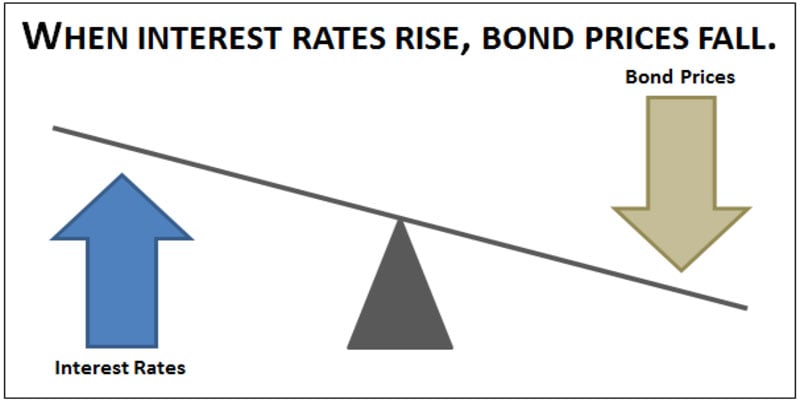Advertisement
Advertisement
Understanding Single-Premium Life Insurance: A Comprehensive Guide
Aug 12, 2024 By Kelly Walker
Single-premium life insurance has become a popular way to secure your financial future. It offers numerous advantages, including flexibility and affordability - which makes it an attractive option for many individuals. Despite the benefits, understanding how single-premium life insurance works can seem daunting. Our comprehensive guide will explain exactly what this type of policy entails and walk you through the pros and cons of investing in single premium life insurance so that you can make a more informed decision on whether or not it's right for you. Read on to learn how single-premium life insurance works and the associated risks and rewards involved with purchasing a policy.
What is Single-Premium Life Insurance?
Single-premium life insurance is a type of permanent, whole life insurance policy that requires a one-time, lump sum payment to purchase. The premium for this type of policy will not change and is usually paid upfront - meaning the policyholder only pays once. This keeps premiums low and allows individuals to establish coverage without going through the hassle of making multiple payments throughout the life of the policy.
How does it Works?
The way single-premium life insurance works is surprisingly simple. The one-time premium paid by the policyholder is invested into the insurer's portfolio and earns interest over time. The amount of money paid out to beneficiaries in the event that you pass away will depend on how much your investment has compounded over your lifetime as well as the death benefit coverage you choose when purchasing the policy.
Who Should Consider Single-Premium Life Insurance?

Single-premium life insurance is a good choice for individuals who want to maintain coverage without spending too much money upfront. It's also an excellent option for those looking to supplement their retirement funds, since the cash value of the policy can be withdrawn at any time and used towards things like investments or other expenses. Additionally, single-premium life insurance offers more flexibility.
Cost Considerations for Single-Premium Life Insurance Policies:
The cost of a single-premium life insurance policy will vary depending on the coverage and type of policy you choose, as well as your age and health. It's important to remember that with this type of policy, you are paying for the entire death benefit in one lump sum - so it's more expensive than other types of life insurance. Additionally, if you choose to withdraw money from the policy's cash value, the death benefit will be reduced accordingly.
Key Considerations before Investing:
As with any type of investment, it's important to do your research and make sure that single-premium life insurance is the right choice for you. Before investing, consider the following key factors:
- Your age: If you are young and expecting your income to increase over time, then investing in a traditional policy may be more beneficial.
- Your income: As mentioned above, those with fluctuating or variable incomes may be more likely to find an advantage in single-premium life insurance as it requires only one payment.
- Your financial goals: Evaluate your current needs and future goals to determine if single-premium life insurance is the best option for you.
Different Types of Single-Premium Life Insurance Policies:

When looking into single-premium life insurance, you will find that there are several different types of policies to choose from.
Term Insurance: This is a type of policy in which the coverage only lasts for a set period of time (e.g., 10, 15 or 20 years). It's usually the most affordable option but it does not offer
Whole Life Insurance: This is a more expensive option but it offers life-long protection and has a cash value component. The cash value grows over time, providing the policyholder with access to funds at any time.
Universal Life Insurance: This type of policy combines features from both term and whole life insurance policies, offering flexibility in terms of premiums and death benefits.
Variable Life Insurance: Variable life insurance provides the policyholder with more control over their investments, allowing them to choose how their money is allocated within a portfolio of different investment options.
Financial Profiles Suited for Single-Premium Life Insurance
The type of financial profile that will benefit from single-premium life insurance will vary depending on the individual's goals and needs. In general, those who are in need of an immediate death benefit but cannot afford a traditional policy may find it beneficial to invest in this type of coverage.
Additionally, those with fluctuating incomes or other sources of income may want to consider single-premium life insurance if they are looking for a steady, long-term investment. Finally, those who are not interested in making multiple payments every month may find this type of policy to be more advantageous as it requires just one payment upfront.
Pros and Cons of Single-Premium Life Insurance
Before deciding if single-premium life insurance is the right choice for you, it's important to weigh the pros and cons of this type of policy.
Pros:
- Immediate coverage: Single-premium life insurance offers immediate protection in the event of your death and does not require multiple payments.
- Flexibility: You can choose a term or permanent policy depending on your needs. Additionally, you can access the cash value component at any time for investments or other uses.
- Low cost: Compared to traditional life insurance policies, single-premium life insurance is usually much more affordable.
Cons:
- One-time payment: It requires a large initial investment which may be too costly for some individuals.
- Limited coverage: The death benefit associated with this type of policy is usually fixed and cannot be changed after purchase without additional costs.
- No guaranteed cash value: since the policy’s cash value is invested in the insurer’s portfolio, there is a guarantee of how much money will be earned over time.
Conclusion:
Single-premium life insurance can be a great way to provide coverage for yourself and your loved ones at a more affordable rate than traditional policies. It offers flexibility and immediate protection in the event of your death, as well as access to a cash value component which can be used for investments or other needs. However, it is important to consider all of the advantages and disadvantages carefully before committing to this type of policy.
On this page
What is Single-Premium Life Insurance? How does it Works? Who Should Consider Single-Premium Life Insurance? Cost Considerations for Single-Premium Life Insurance Policies: Key Considerations before Investing: Different Types of Single-Premium Life Insurance Policies: Financial Profiles Suited for Single-Premium Life Insurance Pros and Cons of Single-Premium Life Insurance Pros: Cons: Conclusion:
Selling Shares Before the Ex-Dividend Date: Maximizing Returns

Understanding the Art of Revenue Calculation in Business

How to Trade Orange Juice Options

The Future Value and Present Value of an Annuity

Understanding Single-Premium Life Insurance: A Comprehensive Guide

How to Calculate the Return on Investment (ROI) of a Marketing Campaign

Deciphering Hedge Funds: Balancing Returns and Fees

Cash on Hand versus Earnings: A Comparison



